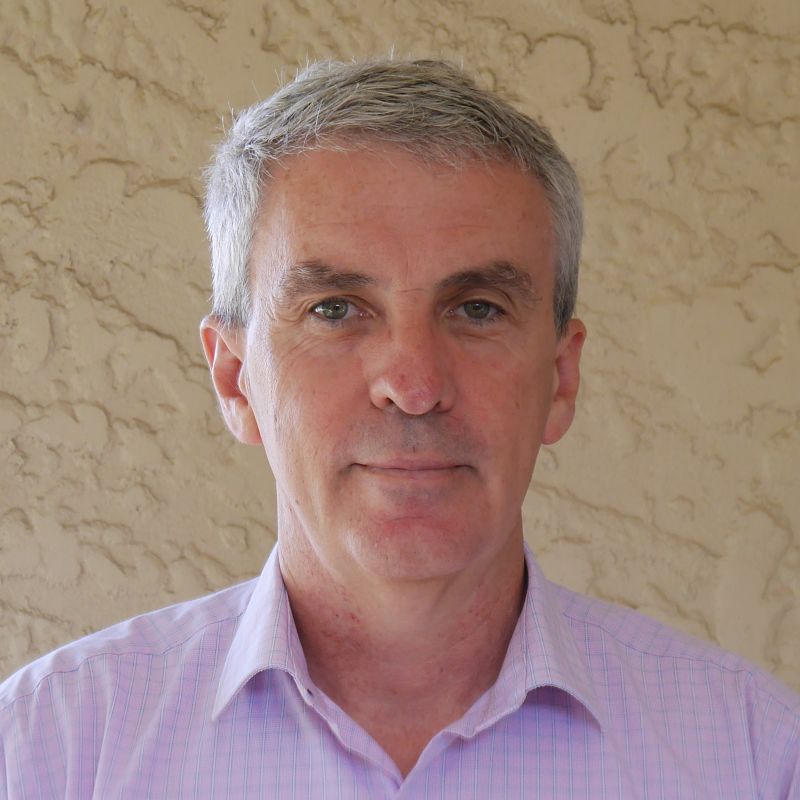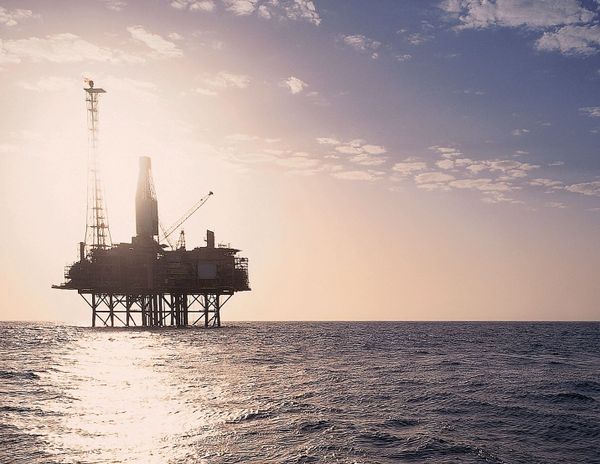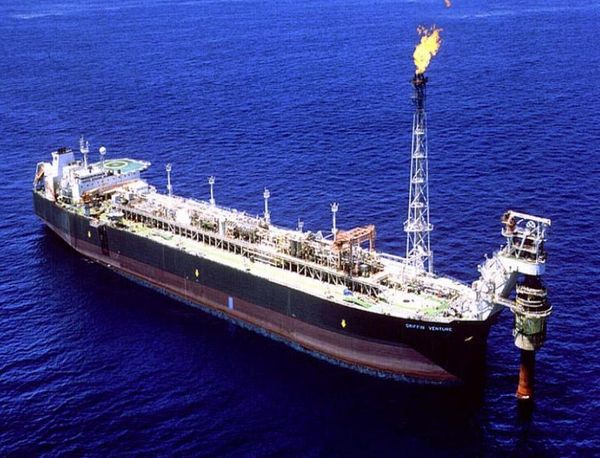Santos net-zero claim questioned
• wins for Perth startups • $ for coal capacity? •
Good morning,
Perth startup Gridcognition received $1million from the Federal Government to further develop its software that optimises complex decentralised energy projects.
Another WA technology company – robotics form Nexxis – today launched Magneto-EX, the world’s first robotics camera inspection crawler suitable for potentially explosive areas. The Magneto-EX will reduce the need for people to enter confined spaces for inception.
Chevron awarded Worley the engineering and project management contract for the power and communications parts of subsea compression for the Jansz-Io field that feeds the Gorgon LNG project.
Santos awarded the FEED contract for the Dorado wellhead platform to Malaysia’s Sapura Energy.
German engineering firm MAN has swill cooperate with Woodside to commercialise micro-LNG units the size of a shipping container that can liquefy about 50,000 tonnes of gas a year.
The WA Government has put $1.55 million towards gathering data off the Albany coast to determine prospects for wave energy. Just don’t mention Carnegie Clean Energy.
The media teams of the Department of Mines, Industry Regulation and Safety and its minister Bill Johnston copped a blast from The West Australian for planning “bland” replies to “very detailed” questions about sexual assaults on mine sites. It was not an issue where lack of clarity was appropriate.
Legal life gets harder for oil and gas
Federal Parliament passed legislation that introduced trailing liabilities for offshore decommissioning back dated to January 1 2021. This is excellent news and will avoid taxpayers being slugged for another Northern Endeavor debacle.
“This law is the biggest policy defeat the oil and gas industry has had since the coalition came to government in 2013,” Wilderness Society manager of policy and strategy Tim Beshara said.
Senator Hanson’s amendment to backdate the legislation further so Woodside would be liable for the Northern Endeavour clean-up was not included. The planned alternative, an industry levy, is yet to be legislated.
The new law means that if Woodside and other oil and gas producers cannot afford decommissioning in the coming decades, BHP will be tapped on the shoulder and reminded of its oil and gas past in the Bass Strait and the North West Shelf.
Oil and gas producers had a lousy week in the courts as well as Parliament.
A NSW court ordered the State’s Environment Protection Authority “to develop environmental quality objectives, guidelines and policies to ensure environment protection from climate change.” A group called Bushfire Survivors for Climate Action took the case to court.
The decision comes about 2½ years after the McGowan Government ordered the WA EPA not to do too much about climate change.
The world of oil and gas investment in Australia has completely changed since then, driven by investors, courts, and trading partners, not Governments.
The Conservation Council of WA has appealed the works approval for Beach Energy and Mitsui’s Waitsia gas plant published by the Department of Water and Environmental Regulation on August 3. The appeal references the recent Sharma case in NSW that found that environmental approval decision makers must give more weight to climate change. The CCWA also argues against the logic used in every environmental submission I have ever read: ‘This project is just a small part of the problem, so the emissions are fine’.
The big legal surprise was the action against Santos, not for emissions under environmental law, but for misleading investors about its net-zero plans under consumer law.
The Australasian Centre for Corporate Responsibility’s climate director Dan Gocher said: “Santos’ ‘clean energy’ and ‘net zero’ claims pose a major risk to investors as it becomes increasingly more difficult to differentiate between companies taking genuine action versus those relying largely on offsets or unproven technologies.”
In December 2020, Santos targeted net-zero emissions by 2040, a decade ahead of most other oil and gas producer’s targets.
The pre-Oil Search merger roadmap shows the two major initiatives to offset emissions from Santos’ oil and gas production are carbon capture and storage and making hydrogen with CCS.
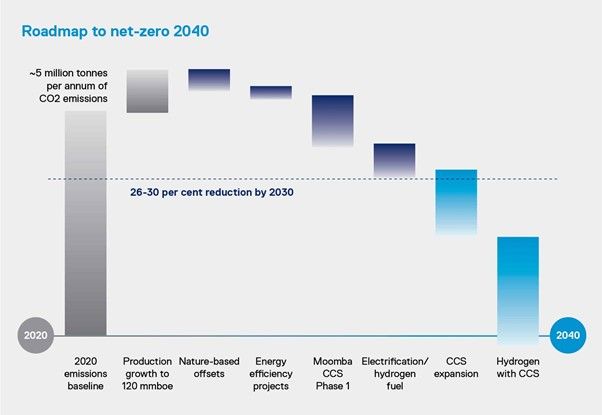
I understand how CCS helps (provided it works, which is a whole other story) but how does making blue hydrogen offset other emissions? Making an emissions-free fuel is great, but it is zero emissions, not negative emissions.
Genuine question – does anyone understand the logic? If so, please drop me a line.
The cynical may think Santos’ ambitious but undetailed plan was just a PR exercise to look good now but kick the can down the road a few years, probably until the next chief executive, when it comes to providing credible detail.
However, the industry is now finding out that kicking the can doesn’t work when travelling uphill.
Perth-based Wood Mackenzie analyst Daniel Toleman said CCS could cut emissions from LNG plants by more than 25 per cent. Storage of CO2 from reservoir gas, as at Gorgon, is favoured as it is simpler and cheaper than capturing CO2 from gas burnt to operate the plants.
Paid to be there
The WA power market has long been different from the east coast as generators are paid to have capacity ready and receive a further payment for power generated. In the so-called National Electricity Market, almost all revenue is linked to power production.
Federal Energy Minister Angus Taylor wants to east to be more like WA. In almost all circumstances, this would be a good thing for the nation, but there is concern the move is a ploy to prop up coal-fired power.
The Whole of System Plan dashboard for the Cast Away scenario of relatively flat demand shows how important capacity payments are in the South West Interconnected System.
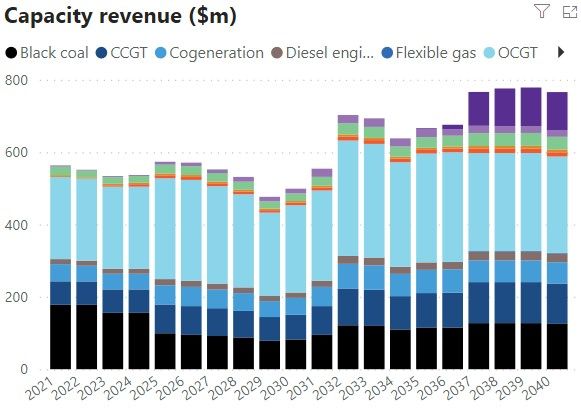
Over the next 20 years, at an average of about $550 million a year, capacity payments to coal and gas-fired generation would total $11 billion.
Batteries (in purple) are only significant from 2037, which is more an issue with the Plan than the concept of capacity payments.
A renewable energy zone planned for the New England area of NSW has attracted 80 prospective projects wanting to build 34 gigawatts of solar and wind farms. Meanwhile, in WA…….
Have a great weekend.
Cheers
Pete

